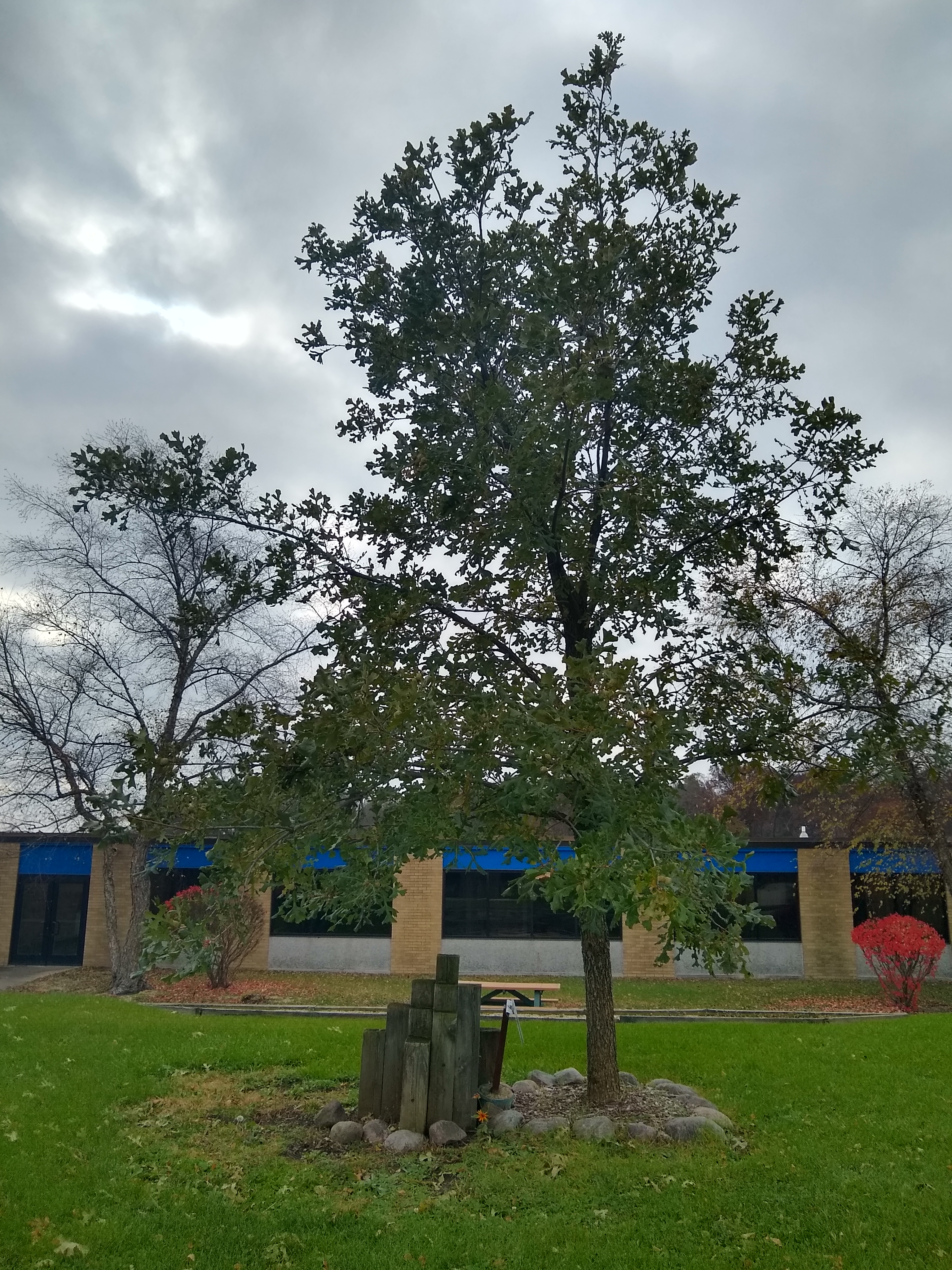While on Thanksgiving vacation in November 2007, we visited the Alamo. I gathered several bur oak acorns and proprogated the acorns during the winter months indoors. In the spring I transplanted them into my back yard (in Northwest Indiana). I had no problems with the seedling until I noticed it wasn't going dormant like the other oaks did in late October. I did notice the seedling had dark green foliage in December and knew this wasn't normal. In the spring I cut off the dead growth. I was a groundskeeper for the Crown Point School Corporation in Crown Point, Indiana, and I transplanted the tree to the courtyard at Winfield Elementary School. I figured being a southern seed growing in the north it was having problems adjusting to our northern winters. I called a professor in forestry from Texas. He told me that since it was a southern seed, it would probably not grow in the north and would eventually die. Every year I cut back dead growth, and every year I noticed it was going dormant earlier. Now it goes dormant at the same time as the rest of the bur oaks. I haven't cut back any dead growth in years. I have noticed that it grows at a much faster rate than the other bur oaks, about three times the rate as native trees.
Today the tree stands about 20 feet tall and it provides some shade for the students when the weather permits them to have class outside. The students call it the Alamo oak. The sign next to it says it was from the Alamo and planted on May 7, 2009. If that tree could get one student interested in the forestry field, it will have been well worth the effort.




